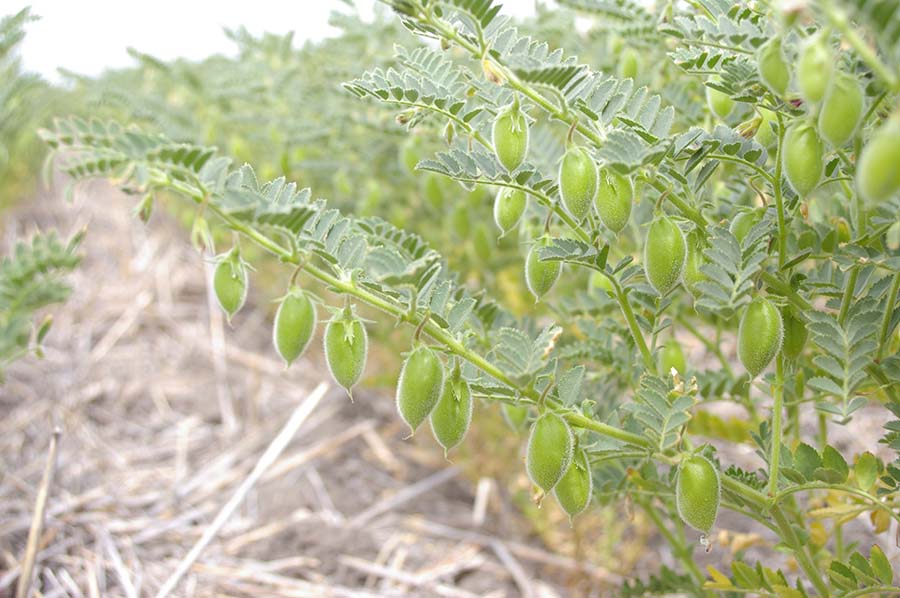A new GRDC investment to improve nitrogen (N) fixation in pulse crops across Australia aims to help grain growers increase crop productivity and reduce reliance on nitrogen fertiliser.
The National Nitrogen Fixation Project will develop superior nitrogen-fixing bacteria (rhizobia) strains for chickpea and review the opportunity for improvement in mungbean.
More nitrogen generated from rhizobia – which are applied via inoculation to pulse seeds – means less fertiliser costs and higher crop productivity.
Aside from the direct benefits to existing chickpea and mungbean growers, the project could facilitate the expansion of these crops into non-traditional growing areas – giving growers from these areas more options to diversify their enterprises.
Additionally, the investment will deliver optimised agronomic strategies for improved nodulation and nitrogen fixation.
The National Nitrogen Fixation Project is a collaboration led by the South Australian Research and Development Institute (SARDI), the research division of the Department of Primary Industries and Regions South Australia (PIRSA).
Improving rhizobia for chickpeas is a primary focus of the project, which will also review mungbean and lupin strains. Photo: GRDC
Project manager and SARDI research scientist Dr Liz Farquharson said the initiative brings experts together from across Australia to tackle the knowledge gap in nitrogen fixation.
“There is scope to further improve pulse inoculation and agronomic management, with results indicating that some pulses are not meeting their maximum potential for nitrogen fixation,” she said.
“A primary focus of the project is to improve the chickpea rhizobia strain, and to review the mungbean and lupin strains.”
Murdoch University, SARDI and the University of Adelaide have commenced a review of an elite cohort of chickpea rhizobia compiled under previous investments as well as sourcing new rhizobia strains from overseas.
“We are now conducting intensive greenhouse and field testing of these strains and, following this, we will compare their performance to the existing inoculant strain and identify candidate strains for further development,” said Dr Farquharson.
“In parallel to strain development we are conducting a national survey of chickpea paddocks to understand the current potential and limitations of the chickpea-rhizobia symbiosis.”
A review of the mungbean symbiosis, which includes a scoping of novel rhizobia strains for mungbean (Group I) and understanding agronomic limitations has also commenced, which Dr Farquharson said would provide a great opportunity for growers in northern New South Wales and Queensland.
GRDC sustainable cropping systems manager Dr Giacomo Betti said the research aims to help growers achieve and exceed the current nitrogen-fixation frontier for chickpea and mungbean.
“Legume crops play a key role in Australian farming systems, providing on average 30kg nitrogen per hectare extra for subsequent crops,” he said.
“The intent of this investment is to continue the national effort to increase the effectiveness of nitrogen fixation in pulses in Australia.
“Identifying new rhizobia strains is part of this, as is the adoption of improved management practices for pulse inoculation, which combined, could further boost nitrogen fixation and create value for growers.
The investment will also continue to improve agronomic practices for traditional pulses such as faba bean, lentil and lupin, particularly in inoculant delivery strategies.
So far in 2024, 20 field trials have been established across Australia to develop more regionally relevant agronomic strategies.
This will help provide growers with best practice management strategies that will increase the success of inoculation and, in turn, improve root nodulation and nitrogen fixation.
These trials will examine known agronomic constraints to good nodulation, such as dry sowing, deep sowing, fertiliser interactions, crop rotations, root health, and the effect of herbicide residues.

Comprising experts from universities, government departments and other organisations, the project team aims to improve nitrogen fixation in pulse crops to help grain growers increase crop productivity and reduce reliance on nitrogen fertiliser. Photo: Jamus Stoner, SARDI
“Hostile soil conditions at sowing and toxicities can affect rhizobia survival and nodulation outcomes,” Dr Farquharson said.
“It is important we investigate the agronomic opportunities and provide guidelines for helping growers better manage their nodulation and nitrogen fixation outcomes.”
“Improved knowledge will also provide better insights into inoculant formulation and placement.
The research team will also work to better understand the cost benefits of nitrogen fixation, which is of interest to many growers.
“We will do this by quantifying the nitrogen benefits of pulses for subsequent crops in comparison to applications of nitrogen fertilisers,” said Dr Farquharson.
“This work complements current farming system and pulse development and extension investments within the regions.”
Project results will be disseminated through workshops, publications and digital content to ensure growers and agronomists have access to the research findings and can apply the latest insights and techniques.
The National Nitrogen Fixation Project is led by SARDI with partners including the University of Adelaide, Murdoch University, the WA Department of Primary Industries and Regional Development, NSW Department of Primary Industries, Queensland Department of Agriculture and Fisheries, and AgCommunicators.
To help further guide the project, growers and advisers are encouraged to complete the project survey. Insights are sought on growers’ approaches to inoculation, knowledge and practice, such as fertiliser rates. The survey is anonymous.


























































